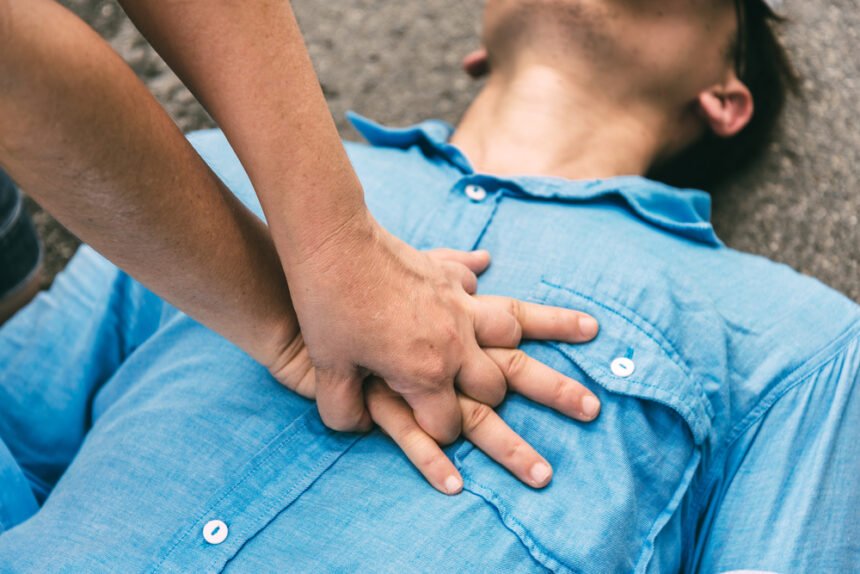You may have wondered whether it is worth getting CPR training. The truth is that the CDC reports that CPR can double or even triple the chances of someone surviving a cardiac arrest outside a hospital.
Cardiopulmonary Resuscitation (CPR) training is an essential life-saving skill that can help save someone’s life in a potentially life-threatening situation. Knowing which CPR level best fits your needs can be daunting, but it’s important to know the different levels and their purposes so you can make an informed decision about what is best for you.
Basic Training And Certification
Basic training and certification in CPR are relatively simple and straightforward. It involves a series of lectures, demonstrations, and practical sessions that must be completed in order to earn a certification. Once the course is finished, participants are then able to take an exam that will test their knowledge of the subject. Passing the exam will grant them the appropriate certification for their level of training.
The process may vary slightly depending on the type of CPR course being taken. Heartsaver First Aid CPR AED courses typically involve both a written and practical examination, whereas BLS courses require only a written exam. On the other hand, ACLS courses are more comprehensive and involve multiple exams as well as group scenarios to prepare participants for real-life situations. Certification and recertification through ProTrainings.com ensure that individuals have the most up-to-date education and knowledge to work safely and effectively.
Advanced Training And Certification
Once basic training and certification in CPR is complete, there are still further levels of training available for those looking to expand their knowledge base. Advanced courses cover more complex topics such as advanced airway management, shock management, and cardiac rhythms. These courses also involve a greater emphasis on practical skills and scenarios so that participants can better prepare themselves for real-life situations. These courses can be part of larger first aid training programs.
Advanced training and certification is often only available to healthcare professionals who need to maintain their certification or stay up-to-date on the latest practices. However, there are some programs that offer advanced courses for those who want to further their education but do not necessarily require the credential for professional reasons. These courses can offer a deeper understanding of CPR techniques and give participants an edge when it comes time to respond in emergency situations. You can learn more about the various CPR techniques on the Red Cross website.
Healthcare Provider CPR Course
For healthcare professionals, the most comprehensive CPR training course available is the Healthcare Provider CPR Course. This course is designed to provide participants with the most current practices and knowledge needed in order to properly administer CPR in a variety of settings. The course includes instruction on basic life support, including one- and two-person rescue techniques, as well as ventilation and airway management. Participants also learn about recognizing cardiac arrest rhythms and providing advanced care for victims of cardiac arrest.
The Healthcare Provider CPR Course covers more than just the basics; it also provides instruction on how to respond to other medical emergencies such as choking, stroke, poisoning, and seizures. Additionally, participants are taught how to use automated external defibrillators (AEDs) and how to properly assess a patient’s vital signs in order to provide the best possible care for any given situation. This course provides an invaluable resource for healthcare providers who must stay up-to-date on the latest practices in life-saving techniques.
Advanced Cardiovascular Life Support (Acls) Course
For those looking to take their CPR training to the next level, the Advanced Cardiovascular Life Support (ACLS) Course is an excellent option. This course is designed for healthcare providers who want to learn more advanced techniques and skills in order to provide higher-quality care for cardiac arrest patients.
The program includes instruction on topics such as electrocardiogram (ECG) rhythm recognition, airway management, and endotracheal intubation, as well as pharmacology and the use of vasopressors. Participants also learn how to recognize various arrhythmias and how to effectively treat them with medications or other treatments.
Pediatric Advanced Life Support (Pals) Course
For healthcare providers who are looking to specialize in pediatric life-support and care, the Pediatric Advanced Life Support (PALS) Course is an excellent choice. This program is designed to provide participants with an in-depth understanding of resuscitation techniques that are specific to infants and children. During this course, participants learn how to recognize medical emergencies specific to pediatric patients, such as respiratory distress and shock, as well as how to effectively treat them.
The PALS Course also covers topics such as airway management for infants and children, pharmacology for pediatric patients, and the use of a defibrillator on those younger than eight years old. In addition, participants learn how to recognize various arrhythmias and understand when medications may be beneficial. This comprehensive program equips healthcare providers with the knowledge necessary to provide life-saving care for pediatric patients in emergency situations.
First Aid Training
For those looking to learn the fundamentals of life-saving care, First Aid Training is an excellent option. In this course, participants are taught how to recognize medical emergencies and how to provide appropriate first aid for adults, children, and infants.
The First Aid Training program covers topics such as recognizing signs and symptoms of illness or injury, wound treatment and bleeding control, shock management, CPR procedures for adults and children, and the use of a defibrillator on adults. Participants also learn about the prevention of disease transmission and safety protocols for handling different medical emergencies. This comprehensive training provides participants with the skills necessary to respond confidently in an emergency situation.
Automated External Defibrillator (Aed) Training
Automated External Defibrillator (AED) Training is essential for those who want to learn how to use an AED in emergency situations. This program provides participants with the knowledge and skills required to both recognize cardiac arrest and deliver appropriate shock therapy.
The training course begins by teaching participants about the different types of AEDs, their safety protocols, and how to properly assess a patient’s condition before administering shock therapy. Participants also receive instruction on when it is most effective to use an AED, and practice using them in simulated scenarios.
CPR training is an important skill to have and there are several different levels of certification available. With the right education, anyone can be trained in CPR and help save a life when it matters most.








